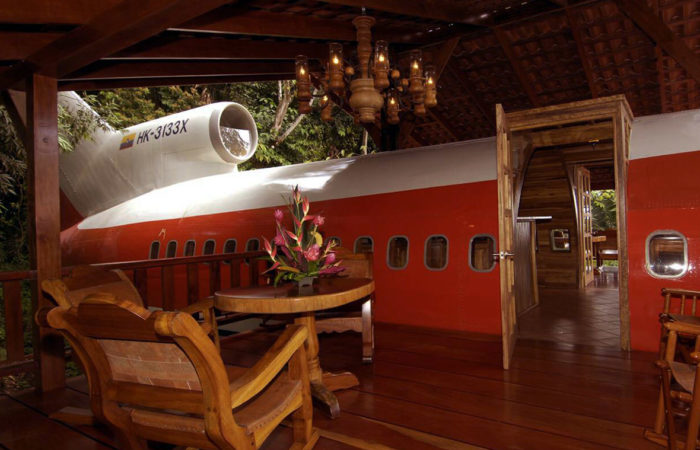Particles that simultaneously change their state despite vast distances between them? Electrons with the properties of both waves and particles? Quantum phenomena are often dramatically different from anything we can experience and imagine. Despite this, the exhibition "Light and Matter" by the Cluster of Excellence MCQST aims to make them understandable for young people.
 Andreas Heddergott / TUM
Andreas Heddergott / TUM The entrance hall of the Deutsches Museum is a hive of activity this morning, packed with school classes waiting to be admitted. Among them is a group of students about to visit the "Light and Matter" exhibition as part of a Science Communication training course.
"In my view, outreach work is a key element of research," says one. She is Paula Garcia-Mochales, studying at TUM for a Master's in Quantum Science & Technology. "And where complex quantum phenomena are concerned, it's particularly important to make these topics accessible to the public."
Hands-on excellence research
The special exhibition "Light and Matter" was conceived for this very purpose by the Munich Center for Quantum Science and Technology (MCQST) , a Cluster of Excellence comprising the Ludwig-Maximilians-Universität München, TUM, and further research institutions as well as the Deutsches Museum. The exhibition presents the history and fundamental principles of quantum physics in the twentieth century, enhanced with various stories of the personalities involved-such as Dr. Alice Golsen. She was the first person to succeed in precisely measuring the radiation pressure of light as a physical quantity in 1923. Despite her achievements, she was denied due recognition for her research during her lifetime. During the National Socialist regime in Germany, Golsen was forced to flee Germany and eventually took her own life in exile. A scenorama of appealingly crafted set-pieces tells this moving story, including an interactive push-button element that shows the setup of her groundbreaking experiment.
Alongside these scenic exhibits, the interactive stations are the most popular with visitors. Here, children and adults alike can explore phenomena such as how the "Paul trap" works, using a simple ping-pong ball that stays in place on a rotating bed. This ion trap enables highly precise analyses of the properties of charged particles to be performed, and is crucial in spectroscopy and the development of quantum computers. Its inventor, Wolfgang Paul, received the 1989 Nobel Prize for Physics.
The researchers at the Cluster and the team at the Deutsches Museum spent almost five years creating the exhibits. "We can only create the individual objects and devise the overall concept for an exhibition of this kind because we have our workshops right here on site. As a result, we can assess very quickly whether a particular idea will repay further work, or whether it is impossible to present in a way that fits the exhibition," says Katharina Stuhrberg, today's guide for the group of training course students. She is currently demonstrating an experiment on display called "Atomic Harmonies," in which the line spectrum of the hydrogen atom is converted into sound. "The line or radiation spectrum of an atom can be explained using quantum physics, and can even be calculated for a hydrogen atom," she says. "The frequencies of the light waves are in an integer ratio, creating harmonious sounds here in our experiment."
Quantum technologies-part of our daily lives
In Paula Garcia-Mochales' view, the exhibition definitely achieves its aim of bringing quantum physics closer to real life: "So many people think that quantum physics is only a matter for scientific researchers," she says. "The exhibition demonstrates how it has already become part of our everyday lives, used in applications from laser technology to GPS navigation."
Outside the museum, Paula continues to engage in communicating the topic and is an active member of the student club PushQuantum . The club enables students in a variety of specialisms to gain practical insights into quantum technologies, and provides opportunities for debate and dialog with experts from industry and research. "It's a great way to bring science to life and make it accessible," affirms Paula Garcia-Mochales. After the tour, she and the others in the group discuss the exhibition and come up with suggestions for improvement.
 Andreas Heddergott / TUM
Andreas Heddergott / TUM Their feedback is welcomed by museum staff member Katharina Stuhrberg: "This special exhibition will become part of our permanent physics exhibition in 2028," she points out "In fact, our exhibition is constantly changing and developing as we take feedback on board from experts and, of course, from visitors, and we are in constant contact with the researchers at the MCQST Cluster."
The final part of the exhibition showcases this dialog particularly clearly, providing an outlook of future avenues in quantum research, and thus of sub-projects of MCQST-from cryptography to quantum sensors. Three researchers give interactive insights into their work and their laboratories on a life-size touchscreen. And visitors can design postcards where they write their questions for the researchers in the Cluster of Excellence, who post the answers on the Cluster's website. By now at the latest, it's clear that the world of quantum science is teeming with answers-but also with questions that lead straight to the heart of all our lives.
- The "Light and Matter" exhibition at the Deutsches Museum runs until October 26.
- The Cluster of Excellence Munich Center for Quantum Science and Technology (MCQST) comprises seven research units from disciplines such as physics, computer science and materials science, covering all areas of quantum science and technology. The central goal is to establish a world-leading center for quantum science and technologies with a multidisciplinary profile that addresses important scientific and technological issues.
- 2025 has been designated as the "International Year of Quantum Science and Technologies" by UNESCO.
This article was published in the second issue of the TUM Magazine.






